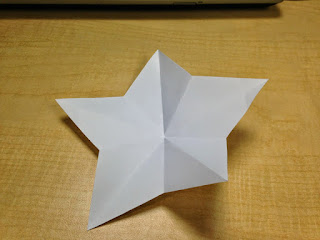Groundwater Guardian teams are often the result of the interest of a community’s sparkplug - someone who is passionate, committed, and capable. That’s certainly been the case in Mecklenburg County, North Carolina, which was first designated as aGroundwater Guardian in 1998 under the leadership of Lisa Corbitt.
Lisa was first introduced to the Groundwater Guardian program at a conference in Chicago in the fall of 1997. Hearing different Groundwater Guardian teams talk about what they were doing in their communities - water festivals, educational outreach, establishing regulatory requirements - inspired Lisa to get a team going in Mecklenburg County.
Mecklenburg County is an urban county home to over one million people. The County encompasses 546 square miles and includes the City of Charlotte as the county seat. Most people in the county get their drinking water through Charlotte’s municipal water source, Mountain Island Lake, a surface water source. Approximately 15% of the population relies on groundwater for drinking water, industrial water, or irrigation from an unconfined bedrock aquifer.
Lisa’s background as a Licensed Geologist and 31 years of working on groundwater issues in Mecklenburg County as a Hydrogeologist and Program Manager gives her a unique perspective on the County’s water resources. Though groundwater provides a small portion of the city’s water source, protecting it and raising awareness has long been a goal of the Lisa and her team. Over 1,800 groundwater contamination sites can be found in the county, ranging from a leaking home heating oil tank to a Superfund site.
The County’s programs and approaches have changed dramatically over the last 20 years. “In the beginning we were in the towns and schools educating high school students to teach elementary school students about the groundwater system through Aquifer Clubs, and annually we would have a Water Festival,” she says, which were great ways to reach students.
Then in 2005, the Mecklenburg County Groundwater Well Regulations were adopted. About the same time, the Learn and Serve Grant the team had been relying on stopped funding the type of educational programs they were offering, and the school system began implementing new restrictions on student involvement.
As a result, the team combined with other local efforts and shifted its focus to new water supply wells, identifying and sampling wells near contamination sites, and educating Water Well Contractors as well as Realtors. Team members are still able to participate in youth education efforts, such as classroom presentations, Science Olympiad, and Envirothon.
Before Lisa retired in December 2018, she laid the foundation for the efforts of the Groundwater Guardian team she’s led for over two decades to continue.
“Mecklenburg County’s GroundwaterAdvisory Board was established in 2005 as a requirement of the Groundwater Well Regulations,” she explains. “As long as the regulations are in effect there will be a citizen advisory board,” which is part of the Groundwater Guardian team. Staff members from Mecklenburg County Groundwater & Wastewater have taken leadership roles in education outreach as part of the Groundwater Guardian team’s efforts.
As for her personal legacy? Lisa is humble: “One person does not leave a legacy. Each success we’ve accomplished is because we have had a great team working together.”
Over 30 years ago, she was hired to establish a groundwater program. The program has gone from zero to:
- Groundwater Well Regulations for permitting, repairing and abandoning water supply wells
- Requirements for areas of regulated groundwater usage
- Groundwater Contamination Database
- A program that identifies and samples wells within 1500 feet of a known contamination site (Mecklenburg County Priority List)
- A public portal for well and groundwater contamination information (Well Information System)
- A public portal for permitting and abandoning monitoring wells (MAPS)
- Combined Groundwater Program with the Onsite Wastewater Program to address an entire piece of property with groundwater in mind.
“It’s been rewarding to help individuals that have found out their well is contaminated and don’t know what to do next. I’ve had the opportunity to work beside them in making sure that they have a safe drinking water source,” she says.
After all, groundwater is the water we drink. And we thank Lisa for being an active partner through Groundwater Guardian and working to protect it for over 30 years.


























